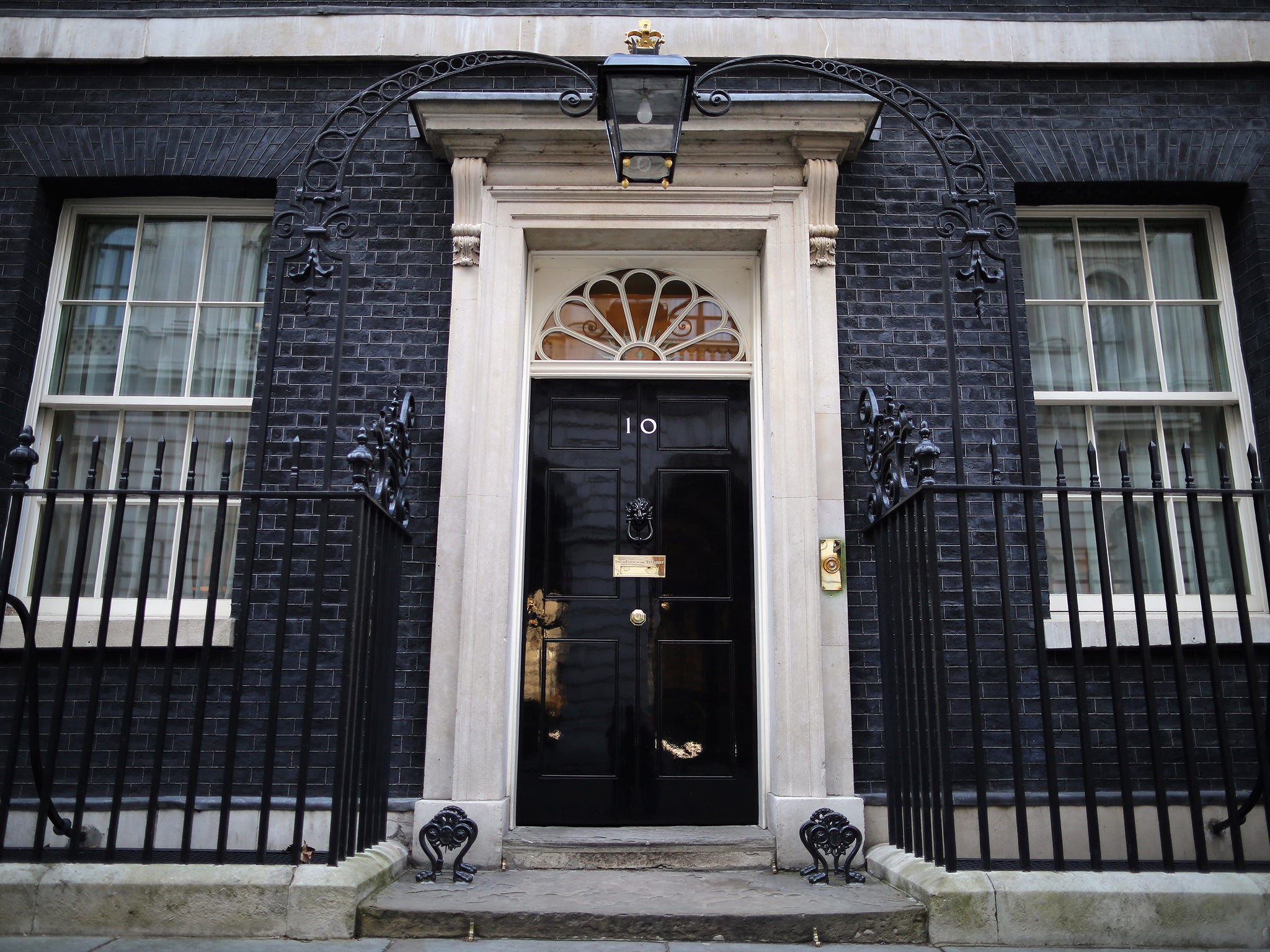10 Downing Street: Take a rare glimpse inside the Prime Minister's home
The building's black front door is well-known, but few have had a look behind the iconic brick facade

10 Downing Street has been used as a home for British prime ministers since 1735, when King George II gave the house to then-Prime Minister Robert Walpole.
The building's black front door is well-known, but few have had a look behind the iconic brick facade.
Now, thanks to Eye Revolution, the public can take a virtual tour of Number 10's inner-guts.
We've pulled together screenshots from Eye Revolution's 360-degree tour to give you a glimpse inside the elegant rooms of Number 10.
Welcome to 10 Downing Street, the home and office of the British prime minister, located in Whitehall in central London.
The building is famous for its outside entrance — a single white stone step and black steel door with the number "10" on it. The door was originally made of oak but was replaced by a blast-proof one in 1991 after an Irish Republican Army (IRA) bomb exploded in the garden.
The iconic black bricks are actually yellow underneath. They were blackened by London smog in the 19th century and then painted black during the 1960s since people had become used to seeing them that way.
The door features a black iron knocker in the shape of a lion's head. The door can't be opened from the outside, but there is always someone ready to open it from the inside. The prime minister doesn't even bother carrying keys with him.
Through the door is the entrance hall. The black chair in the corner was initially used by guards who sat on watch outside, which is why it's designed with a "hood" to shield them from the wind.
The black-and-white chequerboard floor was added during Lord North's time, who was prime minister from 1770-1782.
The entrance hall leads to the main staircase, one of the most impressive features of the building.
The walls are lined with portraits of past prime ministers, with the most recent incumbents at the top of the staircase. There's Winston Churchill on the bottom-left.
The Cabinet room, located upstairs, is separated from the rest of the house by soundproof doors. The Cabinet meets weekly, traditionally every Thursday morning.
A copy of a portrait of Sir Robert Walpole by Jean-Baptiste van Loo hangs over the fireplace.
We now move on to the Pillard room, the largest of three drawing rooms. It's used for large receptions — such as when the England Rugby Union team won the 2003 World Cup — and for the signing of international agreements. There's a portrait of Queen Elizabeth I over the fireplace and a Persian carpet covers almost the entire floor.
The Pillard Rooms opens up into the Terracotta room.
The Terracotta room is named after the colour it is painted. It was the Green room when Margaret Thatcher was prime minister and the Blue room before that. This part of the house was used as the dining room when Sir Robert Walpole was prime minister.
The Terracotta room is decorated with many famous artworks, on loan from the Government Art Collection. Doors in the Terracotta room lead to the White Drawing room.
The White Drawing room was used by prime ministers for private use until the 1940s. Now, it's often used as a meeting room for Downing Street staff.
On the wall are works by works by J. M. W. Turner, an English Romanticist landscape painter in the 19th century.
Getting hungry? Let's move onto the Small Dining room, or breakfast room, where a mahogany table seats 8.
There's a window instead of a chimney breast over the fireplace, which was removed by architect Sir John Soane in the 1820s. "The flues used to get so hot that the substance holding the window together would melt, causing the glass to fall out," according to the Downing Street history website.
Double doors take us from the Small Dining room to the larger State Dining room, which is built over the original vaulted stone kitchen.
This room is used to host the the prime minister's press conferences.
The State Dining room can seat up to 65 people around a large table.
Here's the study, where a portrait of Margaret Thatcher hangs over the fireplace.
Number 10 also has a well-kept garden, which is often used to host events.
This also appears to be where Cameron's cat, Larry, likes to spend time. Larry, a brown and white tabby, was adopted in 2011 to control the mice population at 10 Downing Street.
Read more:
• One of the world's biggest miners cuts its workforce
• There may be an even bigger threat after Isis is defeated
• The UK housing supply just hit a record low
Read the original article on Business Insider UK. © 2015. Follow Business Insider UK on Twitter.
Subscribe to Independent Premium to bookmark this article
Want to bookmark your favourite articles and stories to read or reference later? Start your Independent Premium subscription today.

Join our commenting forum
Join thought-provoking conversations, follow other Independent readers and see their replies